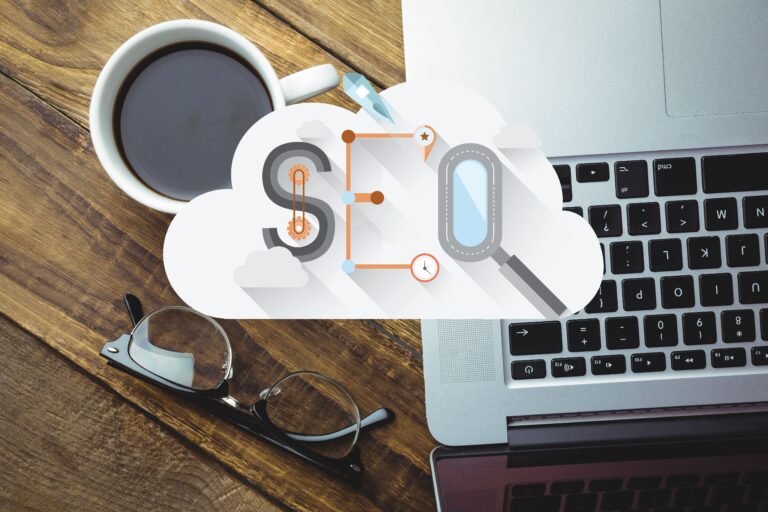Email marketing deliverability
There are expected to be over 4.4 billion email users worldwide by 2023, representing an increase of over 300 million users. Moreover, it is estimated that over 347 billion emails will be sent and received every day in 2023. So you can imagine the importance of email marketing and Maximizing Email Deliverability in a business. It is now essential to ensure email marketing communication in 2024 to not lose out to competitors.
As the mentioned statistics show, email marketing trends will continue to evolve in a positive direction. So, make sure to be in line with email marketing and focus on email marketing deliverability.
📧 Understanding Email Marketing Deliverability
Email marketing is a powerful tool that allows businesses to reach their target audience and promote their products or services.
However, the success of an email marketing campaign depends on how much the emails actually reach the recipients’ inboxes.
This is where email deliverability comes into play.
What is Email Deliverability?
Email deliverability refers to the ability of an email to reach the intended recipient’s inbox. It is a complex set of factors that determine whether an email is delivered, blocked, or filtered as spam.
Why is Email Deliverability Important?
Email deliverability is important because it directly affects the success of your email marketing campaigns. If your emails do not reach your subscribers’ inboxes, they will not be able to read your content, click your links, or take desired actions. Poor email deliverability can also harm your sender reputation and affect your ability to send emails in the future.
Which Industries Have the Highest Deliverability Rates?
According to an analysis by Campaign Monitor on its own dataset, the industries with the highest open rates for emails are Agriculture, Forestry, Fishing, Hunting = 27.3%, Education = 28.5%, Financial Services = 27.1% Media, Entertainment, Publishing = 23.9% & Non-profit = 26.6%.
Factors Affecting Email Deliverability
There are several factors that affect email deliverability. Here are a few:
- Anti-spam filters: Anti-spam filters are designed to protect users against unwanted and malicious emails. If your emails are marked as spam, they will not be delivered to the recipients’ inboxes.
- Email authentication: Email authentication is a process that verifies the sender’s identity and ensures that the email is not forged or modified.
- Sender reputation: Sender reputation is a measure of the sender’s reliability. It is influenced by various factors, such as engagement in email sending, email complaints, and spam traps.
To maintain good deliverability, it is important to take into account certain practices that can impact your reputation and the sending of your messages. We have compiled the best practices for you to not lag behind.
👤 Email Contact Lists: How to Build and Maintain Them
Email marketing is one of the most effective ways to reach out to potential customers and keep existing ones engaged with your brand. However, to make the most of your email campaigns, you need a high-quality contact list. In this article, we’ll discuss how to build and maintain an email contact list that delivers results.
Building Your Email Marketing Contact List
- Start with your existing contacts: Begin by reaching out to your existing customers, clients, and subscribers. Let them know about your email newsletter or promotional offers and encourage them to sign up. You can also offer incentives such as exclusive discounts or freebies to encourage sign-ups.
- Use lead magnets: A lead magnet is an incentive that you offer to potential subscribers in exchange for their email address. This could be a free e-book, a discount code, or a free trial of your product or service.
- Optimize your website: Make sure your website has prominent sign-up forms and calls-to-action that encourage visitors to join your email list. You can also use pop-ups or slide-ins to capture visitors’ attention.
- Attend events: If you attend trade shows, conferences, or other events, make sure to collect email addresses from attendees who express interest in your brand.
- Leverage social media: Use social media platforms like Facebook, Twitter, and LinkedIn to promote your email list and encourage sign-ups.
Maintaining Your Email Contact List
- Keep your list clean with AcyChecker: Regularly remove inactive subscribers and invalid email addresses to improve your email deliverability and avoid being marked as spam.
- Segment your list: Segmenting your email list based on demographics, interests, and behaviors can help you deliver more targeted and relevant content to your subscribers.
- Personalize your email marketing: Use subscribers’ first names and other personal details to make your emails more engaging and personalized.
- Provide value: Make sure your emails provide value to your subscribers by offering exclusive content, promotions, and useful information.
- Monitor your metrics: Keep track of your email open rates, click-through rates, and other metrics to measure the success of your campaigns and identify areas for improvement.

⭐ Avoid Blacklists and Preserve Your IP Reputation
A blacklist occurs when a mail server or internet service provider blocks the sending of your email to its users. This can happen if your email is marked as spam or if your IP address has been flagged for suspicious activity. When your email is on the blacklist, it can have a negative impact on your email marketing campaign as your messages will not reach the intended recipients.
On the other hand, IP reputation refers to the reputation of your IP address, which is used to send emails. If your IP address has a bad reputation, it means that it has been associated with spam or other suspicious activities in the past. This can lead to your emails being marked as spam or blocked by mail servers, even if they are legitimate.
But don’t worry, you can do everything possible to avoid being blacklisted or having a bad IP reputation, we give you the tips:
Use a Reputable Email Service Provider
One of the easiest ways to avoid being blacklisted is to use a reputable email service provider. These providers have strict anti-spam policies and take measures to ensure that their clients’ emails are delivered to their recipients.
AcyMailing has an excellent reputation thanks to its sending service that allows users to send emails from its servers. If an email seems suspicious during sending, a notification is sent to quickly resolve the issue.
Keep Your Email List Clean
Another way to avoid being blacklisted is to keep your email list clean. This means that you should regularly remove inactive subscribers, bounced emails, and spam traps from your list. This will reduce the risk of sending emails to invalid or spam addresses.
AcyChecker is a solution that can match your problem. Indeed, you can clean up your contact lists very quickly. Available on WordPress, Joomla & now in SaaS.
Avoid Using Spam Tactics
To maintain a good IP reputation, it is important to avoid spam tactics such as buying email address lists, using misleading subject lines, or sending too many emails in a short period of time. These tactics can lead to your emails being marked as spam, which can harm your IP reputation.
If you want more information on the topic, we have written a blog article on the subject that details what IP reputation is all about.
🔥 Optimizing Your Email Marketing
To improve the deliverability of your emails, it is essential to optimize their content. For this, it is important to rely on tracking statistics, which allow you to measure the effectiveness of your emails in terms of click-through rates, bounce rates, and unsubscribe rates. By analyzing this data, you can identify what works well and what needs improvement.
One of the key elements to consider is the subject of your email. It must be clear, concise, and attractive to encourage recipients to open your message. The content of your email must also be relevant and tailored to your target audience. Don’t hesitate to do A/B testing to identify the best formulations.
Finally, it is important to consider the design of your email, which must be attractive and easy to read. Use images and colors to make your message more visual and enjoyable to read.
Why Engaging and Relevant Content Matters?
Engaging and relevant content is essential for improving email deliverability. When your subscribers find your content engaging and relevant, they are more likely to open and engage with your emails. This, in turn, improves your email engagement and sender reputation.
Email engagement is a crucial metric that determines the success of your email marketing campaigns. It measures how your subscribers interact with your emails, such as opening, clicking, and forwarding them. When your email engagement is high, it indicates that your subscribers are interested in your content, which can lead to higher conversion rates.
Sender reputation is another critical factor that affects email deliverability. It’s a score assigned by email service providers (ESPs) that determines whether your emails will land in the inbox or spam folder. When your sender reputation is high, it indicates that you’re sending relevant and engaging content to your subscribers, which can improve your email deliverability.
How to Create Engaging and Relevant Content?
Creating engaging and relevant content takes time and effort. Here are some ways to create engaging and relevant content:
- Personalize Your Emails
Personalization is a powerful tool that can help you create engaging and relevant content. When you personalize your emails, you show your subscribers that you care about their preferences and interests. You can personalize your emails by using their names, past purchase history, or location.
- Segment Your Mailing List
Segmentation is another effective way to create engaging and relevant content. When you segment your mailing list, you divide your subscribers into smaller groups based on their demographics, interests, or behavior. This allows you to send targeted emails that are more likely to resonate with your subscribers.
- Use Eye-Catching Subject Lines
Your subject line is the first thing that your subscribers see when they receive your email. That’s why it’s crucial to make it eye-catching and compelling. Your subject line should be concise, clear, and relevant to the content of your email.
- Use Clear and Concise Language
Your language plays a significant role in creating engaging and relevant content. You should use clear and concise language that’s easy to understand. Avoid using jargon or technical terms that your subscribers may not understand.
read also : How to create a newsletter on WordPress




